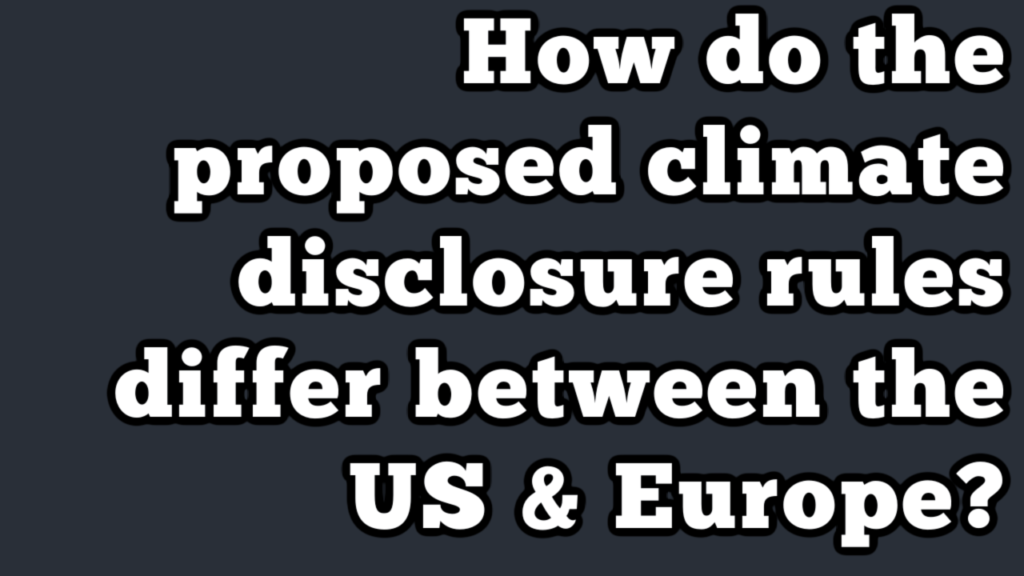How do the proposed climate disclosure rules differ between the US & Europe?

This Brookings Institution article from Addisu Lashitew illustrates the differences between the proposed climate rules in the United States and Europe. Here’s an excerpt:
The EU’s CSRD applies what is called “double materiality” principle, requiring companies to disclose information that is material for investors as well as for other societal stakeholders and the environment. The proposed SEC rule, on the other hand, is grounded on the “single materiality” principle, as it emphasizes investor-focused risk governance and financial materiality.
Given the SEC’s narrow mandate of protecting investors, the proposed law does not aspire to advance a green transition, as the EU’s disclosure law does. Instead, it is framed as a means to help investors make better decisions on matters of corporate “exposure to, and management of, climate-related risks, and in particular transition risks.”
The proposed rule thus sidesteps the (politically contentious) questions of whether or not climate change is real and how companies contribute toward it. It treats climate-related physical and transition risks just like any other business risks that are covered by existing disclosure laws. The use of the probabilistic concept of risk also reduces the burden of proof on climate science: So long as climate risk is high enough to be material for investors, it falls within the purview of the SEC’s rulemaking authority.
